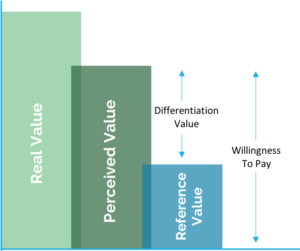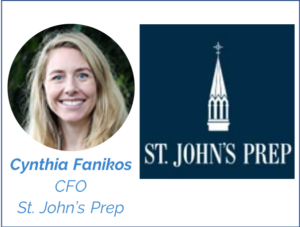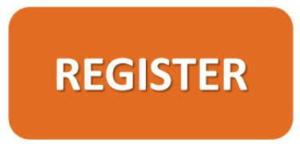Now, More Than Ever, It Is Vital to Measure and Manage What Matters Most: Your School's Perceived Value
Written by Dr. Harry Bloom, SVP of Client Solutions
Heads of School manage many things. But, there is one vitally important factor that often remains undermanaged. Ultimately, it is the most important one. It determines the degree of support a school will receive from current and prospective families, donors, and the community. This factor is the school’s “perceived value” in the marketplace. For many school leaders, this is a nebulous and intangible term. But, in a precarious pandemic-impacted environment, such as the one we are all facing, it has never been more important.
Measuring Success has, not surprisingly given our name, developed a method to measure and manage perceived value.
Here is the equation that determines your school’s perceived value:

Now that we have a usable definition, how can a school ensure it is maximizing its perceived value? There are 3 key steps:
- Action Research: We ask current as well as prospective families (a) what they value most, and (b) how they assess how well our school is delivering value compared to the competition. We document our areas of strength (our outcomes). Where there are perceived shortfalls, we either set the record straight with evidence of great outcomes or put in place corrective action.
One note: In order to conduct research among prospective families, we have to understand who they are. Many schools do not have a clear handle on that. At Measuring Success we have developed a data-driven technique for determining a school’s best prospects called Lookalike Analysis. It uses data science to identify the very most likely prospects to pick our school so they can be contacted for research—and enrollment—purposes.
- Benchmarking Driven Financial Reengineering: Next, we tackle the issue of ensuring we are maximizing value per dollar of tuition charged. We do this by rigorously benchmarking every aspect of our
 operations against competition to understand how well we are generating and using resources. We use the benchmarking results to inform operational and financial redesign (sculpting) bydepartment leaders—augmenting non tuition resources (e.g., auxiliary income) where warranted and reducing expenditures where they do not represent value or can be spent more efficiently.
operations against competition to understand how well we are generating and using resources. We use the benchmarking results to inform operational and financial redesign (sculpting) bydepartment leaders—augmenting non tuition resources (e.g., auxiliary income) where warranted and reducing expenditures where they do not represent value or can be spent more efficiently.
- Benchmarking Driven Financial Reengineering: Next, we tackle the issue of ensuring we are maximizing value per dollar of tuition charged. We do this by rigorously benchmarking every aspect of our
Thirty Jewish day schools utilized this benchmarking data-driven approach coming out of the recession of 2008-9 and identified $22 million in improvements to implement during the 2010-2012 period. More recently, St. John’s Preparatory School in Danvers, MA went through this same process and identified $9 million in improvements over five years in order to enhance its perceived value. (Read about St. John’s Prep in Net Assets here, and watch CFO Cynthia Fanikos describe the project here.)

- Communication of Value for Tuition: Now we are ready to communicate relentlessly about our delivery of value and optimization of every dollar of tuition. We have used data and research to optimize value relative to tuition and can reap the enrollment and Advancement rewards.
We can now go on the offensive and aggressively work to retain families, recruit new ones, and attract donors because we have the key “perceived value” formula in our sights, and have the information and validation to showcase our strength. This is a great position to be in in any time period but particularly in the challenging one we are facing now.

To learn more about how your school can use data to maximize its perceived value, please contact Dr. Harry Bloom at 202-524-1532 or harry.bloom@measuring-success.com.
To help schools overcome the current and coming challenges, we’ve launched a weekly webinar series on topics critical to independent school vitality (full schedule below). To learn more about cultivating and communicating your school’s perceived value proposition, register for our April 14th webinar “Communicating Your School’s Value Proposition: What the Research Indicates is Key”
 Since Measuring Success published its seminal 2016 research study on the effect of tuition changes on enrollment, many schools have been focused on the issue that most directly drives enrollment: Perceived Value Proposition. In this interactive webinar, Measuring Success will share its learning about the factors that do and do not drive perceived value, and about how to consistently maximize it and grow enrollment.
Since Measuring Success published its seminal 2016 research study on the effect of tuition changes on enrollment, many schools have been focused on the issue that most directly drives enrollment: Perceived Value Proposition. In this interactive webinar, Measuring Success will share its learning about the factors that do and do not drive perceived value, and about how to consistently maximize it and grow enrollment.
 Since Measuring Success published its seminal 2016 research study on the effect of tuition changes on enrollment, many schools have been focused on the issue that most directly drives enrollment: Perceived Value Proposition. In this interactive webinar, Measuring Success will share its learning about the factors that do and do not drive perceived value, and about how to consistently maximize it and grow enrollment.
Since Measuring Success published its seminal 2016 research study on the effect of tuition changes on enrollment, many schools have been focused on the issue that most directly drives enrollment: Perceived Value Proposition. In this interactive webinar, Measuring Success will share its learning about the factors that do and do not drive perceived value, and about how to consistently maximize it and grow enrollment.
 Since Measuring Success published its seminal 2016 research study on the effect of tuition changes on enrollment, many schools have been focused on the issue that most directly drives enrollment: Perceived Value Proposition. In this interactive webinar, Measuring Success will share its learning about the factors that do and do not drive perceived value, and about how to consistently maximize it and grow enrollment.
Since Measuring Success published its seminal 2016 research study on the effect of tuition changes on enrollment, many schools have been focused on the issue that most directly drives enrollment: Perceived Value Proposition. In this interactive webinar, Measuring Success will share its learning about the factors that do and do not drive perceived value, and about how to consistently maximize it and grow enrollment.